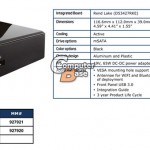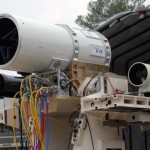FBI’s Smartphone Surveillance Tool Explained In Court Battle
concealment writes with news that a court battle has brought to light details on how the FBI's "stingray" surveillance tool works, and how they used it with Verizon's help to collect evidence about an alleged identity thief. Quoting: "Air cards are devices that plug into a computer and use the wireless cellular networks of phone providers to connect the computer to the internet. The devices are not phones and therefore don’t have the ability to receive incoming calls, but in this case Rigmaiden asserts that Verizon reconfigured his air card to respond to surreptitious voice calls from a landline controlled by the FBI. The FBI calls, which contacted the air card silently in the background, operated as pings to force the air card into revealing its location. In order to do this, Verizon reprogrammed the device so that when an incoming voice call arrived, the card would disconnect from any legitimate cell tower to which it was already connected, and send real-time cell-site location data to Verizon, which forwarded the data to the FBI. This allowed the FBI to position its stingray in the neighborhood where Rigmaiden resided. The stingray then "broadcast a very strong signal" to force the air card into connecting to it, instead of reconnecting to a legitimate cell tower, so that agents could then triangulate signals coming from the air card and zoom-in on Rigmaiden’s location. To make sure the air card connected to the FBI’s simulator, Rigmaiden says that Verizon altered his air card’s Preferred Roaming List so that it would accept the FBI’s stingray as a legitimate cell site and not a rogue site, and also changed a data table on the air card designating the priority of cell sites so that the FBI’s fake site was at the top of the list." Read more of this story at Slashdot.
Waiting for a 1TB SSD below $1 per GB? Crucial says wait no more
Crucial announced in a press release this morning that it has begun selling its latest round of consumer-grade solid-state disks (SSDs), the M500 . The 2.5-inch SATA III SSDs are the follow-up to Crucial's M4 SSDs, which are a pretty popular choice for people adding SSDs to existing systems (I think I have four or five M4s scattered in computers around my house). The drives use 20nm MLC NAND sourced from Micron (and if you're not sure what MLC NAND is, we've got a great SSD primer right here ), along with a Micron-provided SSD controller. Performance for the M500 drives is what you'd expect from a drive in this class: sequential read and write speeds of 500MB per second and 400MB per second. But the big news about the announcement is the capacities. The M500 is available in standard pedestrian capacities of 120GB and 240GB, as well as a large capacity of 480GB, but the top-end SKU is the exciting one: 960GB for just $599.99 (62¢ per raw GB). The MSRPs for the smaller capacities are $129.99 for the 120GB (about $1 per raw GB), $219.99 for the 240GB (about 91¢ per raw GB), and $399.99 for the 480GB (about 83¢ per raw GB). Read 4 remaining paragraphs | Comments
“Homeless city” in tunnels beneath Kansas City
Police leveling a homeless campsite outside of Kansas City discovered a "hidden community" of transients living in an elaborate series of tunnels , reports KMBC.
Intel looking to turbocharge its NUC with Core i5 and i7 CPUs, according to...
It looks like Intel's planning on bringing its Next Unit of Computing (NUC) mini-computer upmarket, if a leaked roadmap from ComputerBase.de is to be believed. The documents look highly tentative, but if they come to fruition then Intel will start offering new NUCs (code-named "Skull Canyon" and "Horse Canyon") with Intel Core i7-3537U and Core i5-3427U processors along with its current Core i3 model during the first half of the year. New motherboards would be used that alter the slot configurations substantially: the Thunderbolt connector would be dropped in favor of USB 3.0 -- three on the i7 model, one on the i5 -- with DisplayPort 1.1a added to each along with HDMI 1.4a connectors. There's no pricing yet, but we found that you'd need to nearly double the price of the original NUC to create a working computer, so bear that in mind when you're looking at the leaked slides after the break. [Image credit: ComputerBase.de] Filed under: Desktops , Intel Comments Via: FanlessTech Source: ComputerBase.de
New Thunderbolt Revision Features 20 Gbps Throughput, 4K Video Support
hooligun writes "The next-gen Thunderbolt tech (code-named Falcon Ridge) enables 4K video file transfer and display simultaneously in addition to running at 20 Gbps. It will be backward-compatible with previous-gen Thunderbolt cables and connectors, and production is set to ramp up in 2014. An on-stage demo with fresh-off-the-press silicon showed the new Thunderbolt running 1,200 Mbps, which is certainly a step up from what's currently on the market." Read more of this story at Slashdot.
Windows 8’s rising security tide raises all antivirus boats
Even without a security suite, Windows 8 is safer than Windows 7. Adding just about any third-party security suite makes it even safer, a new study finds. [Read more]
Intel announces next-gen Thunderbolt with 20 Gbps throughput, 4K support
Here at NAB, Intel just introduced the next generation of its Thunderbolt interface, which promises a data rate of 20 Gbps in both directions (on each of the two channels) as opposed to 10 Gbps for the previous version. Of course, the company stepped back for a moment first, boasting that Thunderbolt currently has about 200 licensees, and more compatible devices -- along with new, thinner cables -- should be coming out in the following months. Building up to the big reveal, Intel also shared some info about its new Thunderbolt host controller, (code-named Redwood Ridge), which will be built into some of Intel's upcoming fourth-gen Core processors. But let's talk about the real news: the next-gen Thunderbolt tech (code-named Falcon Ridge) enables 4K video file transfer and display simultaneously in addition to running at 20 Gbps. It will be backward-compatible with previous-gen Thunderbolt cables and connectors, and production is set to ramp up in 2014. An on-stage demo with fresh-off-the-press silicon showed the new Thunderbolt running 1,200 MBps, which is certainly a step up from what's currently on the market. Update: We've added a video of the Thunderbolt demo from Intel's stage. Hop on past the break to check it out. Filed under: Intel Comments
Google Fiber is officially coming to Austin, Texas
Hear that? It's Austin, being weird enough to add yet another reason to live within its city limits. As rumored , Google Fiber will be rolling down to one of Texas' most esteemed towns in the near future, joining the Kansas City, Kansas and Missouri metro as the only locales (so far) in the US of A offering the outfit's Fiber-based TV, phone and 1Gbps broadband services. Mum's the word on an exact rollout, but we'll update this post as we learn more. Filed under: Internet , HD , Google Comments Source: Gig.U
Watch a Navy Laser Gun Blast a Drone Right Out of the Sky
It may sound like sci-fi, but lasers are definitely the future of war. As are drones. So what could be better than to see them go up against each other in a blaze of explosive glory? Looks like in the rock-paper-scissors game of modern combat, laser beats drone. More »
Microsoft’s Next Xbox Said To Shift To x86 Architecture Courtesy Of AMD System-On-A-Chip
Microsoft’s next Xbox, which could get an initial unveiling as early as next month , will use an AMD system-on-a-chip according to a new Bloomberg report . The new AMD SoC will mean that Microsoft is moving to an x86-based system architecture, which Sony’s upcoming PlayStation 4 is also adopting. The change is great news for AMD, and for gamers, and bad news for AMD’s chief rival Intel. The new Microsoft console will be running a “Jaguar” CPU, which is also what’s going into Sony’s PS4, alongside a Radeon graphics processor from ATI, an AMD subsidiary. The similarity between the two SoCs employed in each next-gen console should go a long way toward silencing complaints from developers that it’s too difficult and resource-intensive to develop for each type of console. A shared x86 architecture means that it’ll be much easier to port titles, both between consoles and from the PC. For AMD, it means gaining access to a much bigger chunk of the console gaming industry, at a crucial juncture: the desktop and notebook PC market is shrinking, facing increasing encroachment from devices like the iPad, meaning there’s less room to vie with Intel for market share in a space where Intel already clearly dominates. The console industry hasn’t exactly been a shining beacon of growth itself, but with a hardware refresh imminent, AMD is in the best position to capitalize should consumer interest once again be caught by fancy new console devices. The problem with Microsoft’s decision to reportedly change over to AMD is that it will likely render games made for the 360 incompatible with the next-generation platform. But long-term, the decision means it’s much easier for developers to work with, which should translate to an alleviation of financial pressures on game studios that are already facing revenue crunches which are forcing cost-cutting measures. The console exclusive might be more of a rarity, but gamers benefit, and we could also see shorter development cycles leading to more frequent game releases. Another party left out of the fun might be the Wii U, which uses a PowerPC based processor under the hood. But overall this is very good news for gamers, since it could both free up resources for developers to spend on innovation and R&D, and suggests both consoles will behave much more like home entertainment PCs based around the TV.











